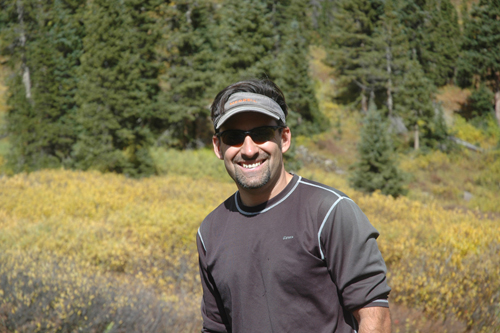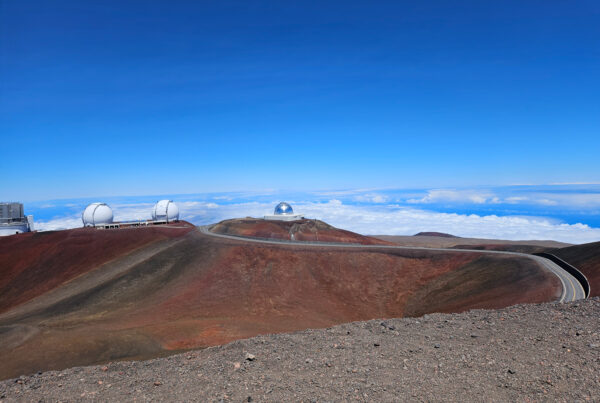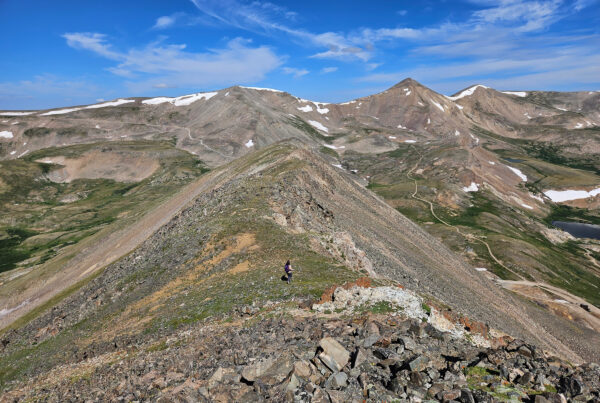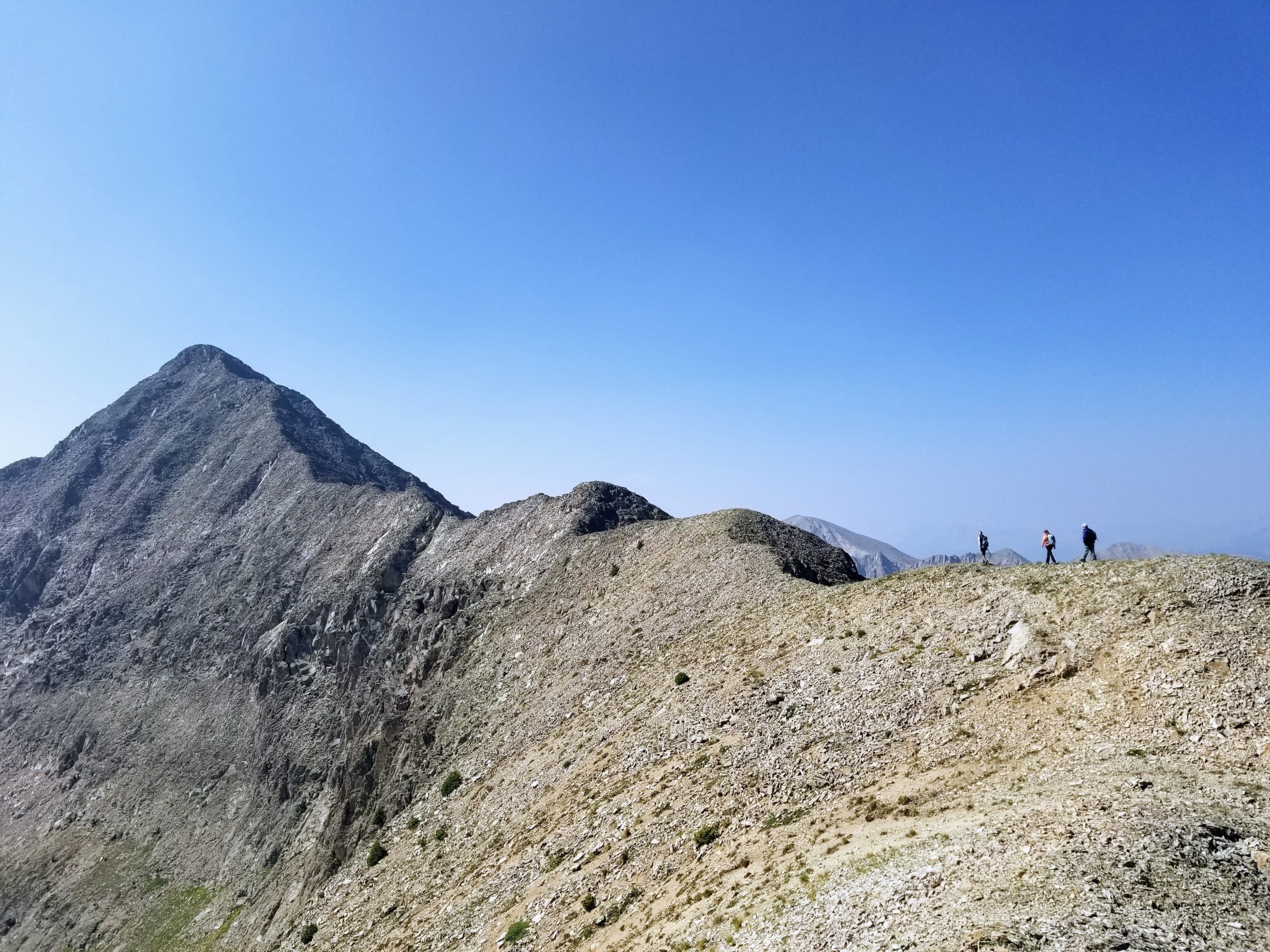Last Updated on May 11, 2015 by James Dziezynski

The beautiful, forgotten Bard Creek Trail.
A long-forgotten hiking trail became the catalyst for my new book project. The as-of-yet unnamed guidebook looks at the excellent mountain hikes that are close to the I-70 corridor between Denver and Vail. Its inspiration was a faint but well-defined trail that etherealized in the forests at the foot of Bard Peak.
In the past five years, I’ve spent a lot of time exploring the area east of Herman Gulch (Watrous Gulch / Bard Creek Trail). While the peaks such as Mount Parnassus and Wood Mountain are the stars of the show, the barely-there Bard Creek Trail was an intriguing mystery that kept me coming back. Most modern maps neglect to show any of the trails in the Watrous Gulch area, though USFS / Caltopo maps do show the old Bard Creek Trail, though the segments I was able to discover don’t quite match up with my GPS data.
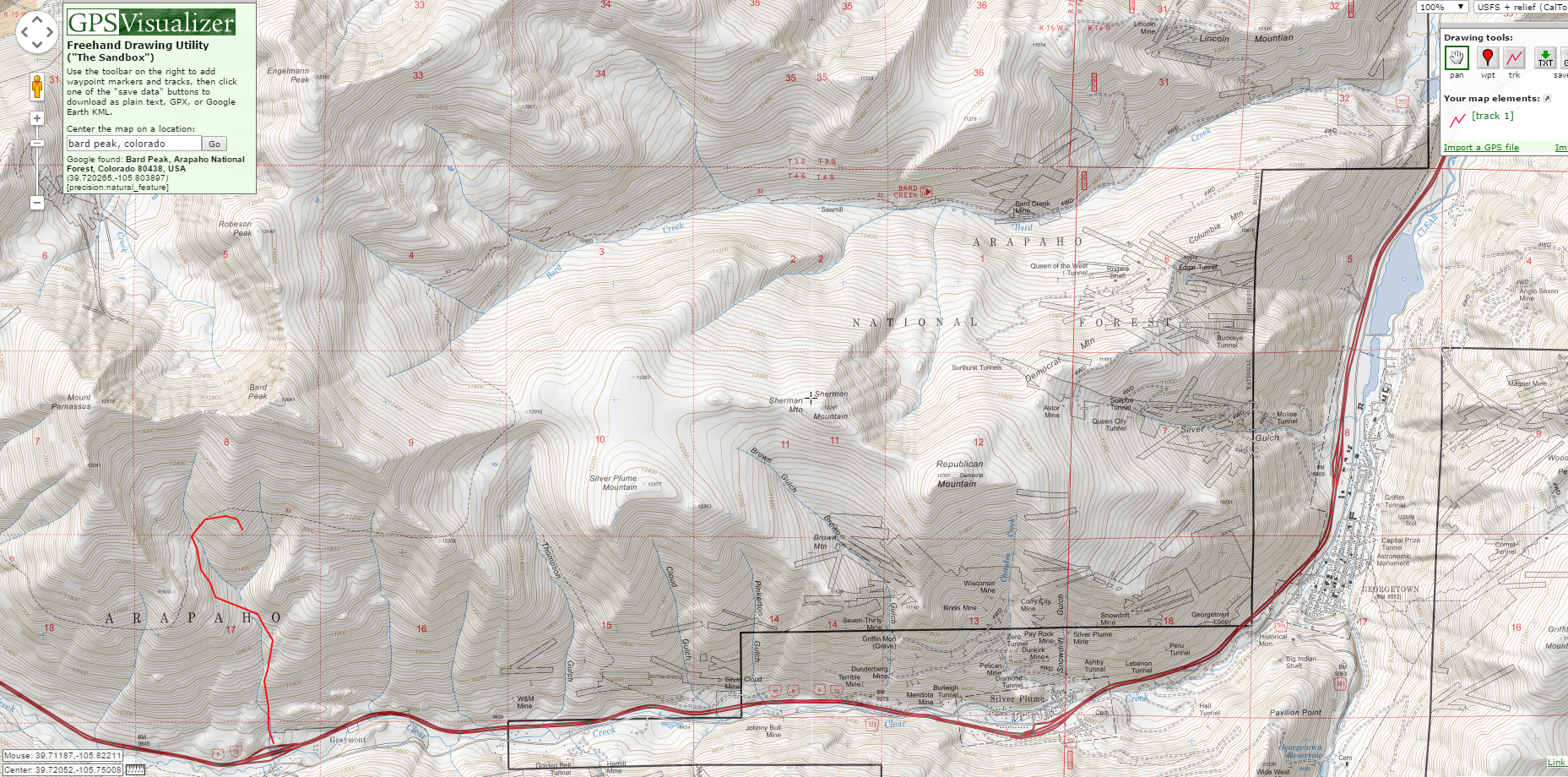
The Bard Creek Trail is visible on this USFS map. My little off-trail exploration is the red GPX track. Click for a bigger view.
How such a fantastic trail so close to the metro fell into disrepair is a bit of a mystery. As the lead image in this article shows, when the trail appears it’s a well-defined path. There are even old wooden signs have eroded back to blank planks. Between the skeleton segments of the trail are swaths of scratch-a-riffic bushwhacking, where the trail abruptly ceases, only to resume at some other random point.
As it turns out, there are a lot of trails like this in the Front Range. Some of these dormant trails are being absorbed by the Continental Divide Trail (a trail system which is also sparsely defined), while others seem to simply disappear as the crowds head towards more popular destinations like the 14ers and the Colorado Trail. These forgotten trails are even more prolific in the Gore Range, where the “sort of there” trail network lends a welcome, wild ambiance to the mountains there.
Besides taking the logical route out of Herman Gulch to the Bard Creek Trail, there’s a very interesting spur trail that starts from the north side of the Bakerville Exit. An unmarked trail skirts around a bit of private property and eventually connects with the intermittent Gore Creek Trail. As the USFS map shows, the bulk of this trail should be visible above timberline, yet the hills seemed scrubbed clean of the path’s scar. Farther east, the Bard Creek Trailhead near the Bard Creek Mine is still there, so it seems like the neglected section of this abbreviated trail is only 2 – 3 miles before it resumes in Herman Gulch (maps seem to indicate the trail merges north with the also-forgotten Mt. Nystrom Trail, which is now part of the Continental Divide Trail and continues into the Vasquez Range near Winter Park).

Pretty sweet views above I70 as Paul, Sheila and the pups climb up. The Y shaped gulch on the opposite mountain splits to Stevens Gulch on the left, Grizzly Gulch on the right.
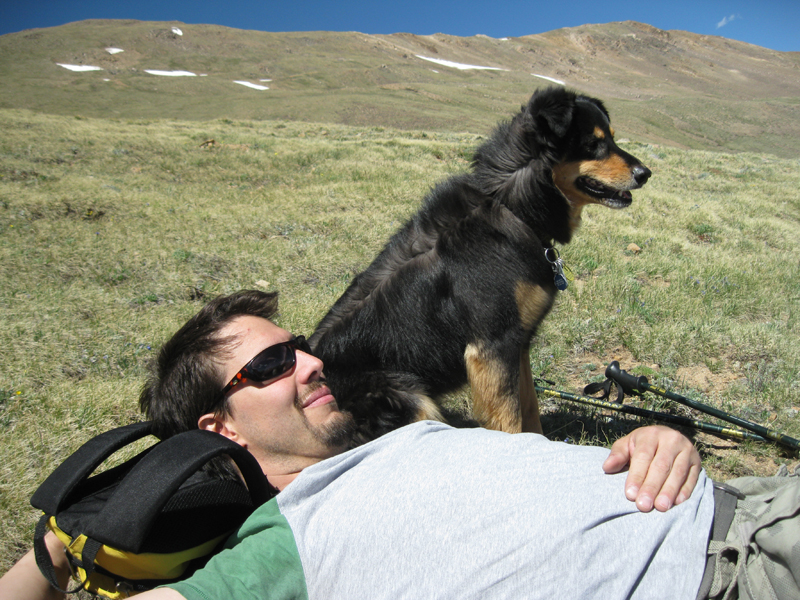
Paul and Mystic relaxing while I fidget with my GPS gear.
Our little adventure was a blast, even if we came home with plenty of bright pink slashes and scratches on our arms and legs from the off-trail navigation. The prospect of the unknown, the lesser-traveled and forgotten trail is super appealing to me, as it is to many adventurers. That’s not to disrespect the value of well-established and maintained trails; they are certainly wonderful gateways to the wilderness. I love reminders that Colorado is still wild, even when the din of civilization is roaring less than a mile away on the busy highway. It feels like sacred ground, a place where wildlife retreats and knows the creeks, ponds and caves. That feeling restores and ignites an adventurous spirit in me that is often dulled by the fabricated experience of the well-worn trail.
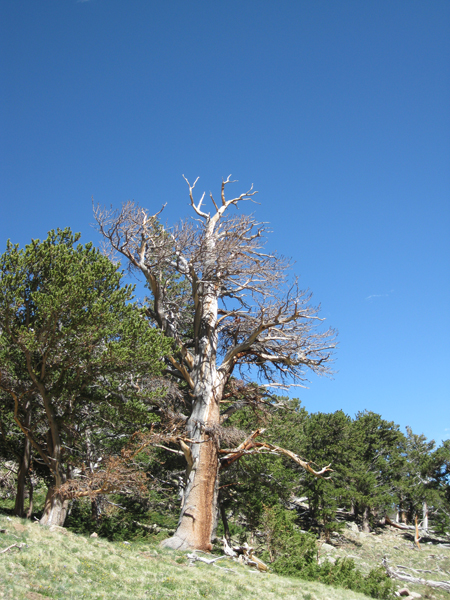
Ancient pines along the way.

